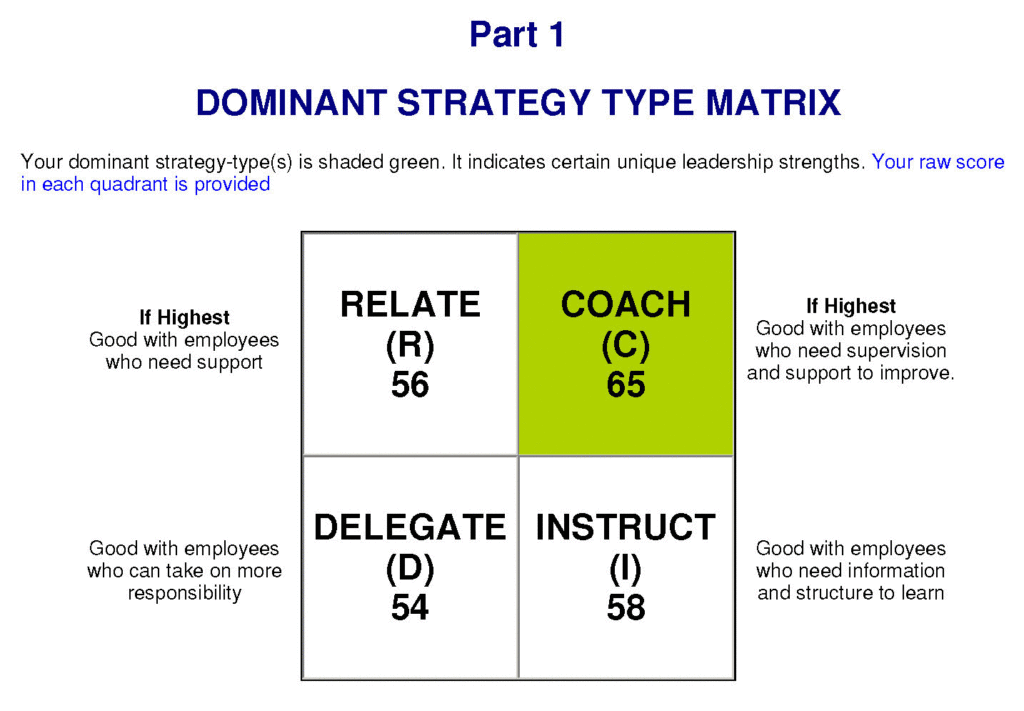Employee Support: Strategic Leadership Type indicator (SLTi)
SLTI will help leaders:
- Discover their preferred leadership strategies for a variety of contexts;
- Learn how to adjust their approach to reflect employee capability;
- Move toward higher autonomy and competence;
- Improve productivity.
SLTI teaches a daily use management strategy on how to better work with direct reports based on their individual circumstances. Supervisors first assess their employee’s motivation and capability for high performance and then they use the optimal supervisory style according to the “SLTI quadrant model” to manage the individual most effectively.
The 4 styles are coaching, relating, delegating, and instructing. SLTI is the four quadrant leadership model actually used at Ohio State University’s John Glenn Leadership Institute – the birthplace of the quadrant leadership model.

The following is a part of the training that we provide our clients:
- Anyone in a position of authority may find themselves thrust into a leadership role. But being in a leadership role means you have the opportunity to provide leadership. It does not guarantee that you will do so.
- It can be fairly difficult to provide good management, let alone good leadership.
Management involves stepping up to various responsibilities. It requires you to be accountable for the performance not only of yourself but of a group of people. To do this, you probably need to use various methods for controlling what they do, such as:
− Defining each person’s tasks or roles
− Checking on their work
− Giving them instructions
− Correcting them when they make errors
− Tracking information about results
These elements of managing the performance of others are important in the workplace, but they do not, on their own, ensure good leadership.
- Leadership goes beyond management because it has higher expectations for performance. In managerial leadership, the leader’s aim is to get superior performance from the group. This involves many additional considerations, such as raising motivation to perform, developing skills and abilities, and improving work processes. The leader attempts to move the entire group ahead. To lead means to strive for higher and better results and to believe in the potential of your employees.

